INTRODUCTION
Although most of the world knows very little about the philatelic history of Bangladesh, it has had a solid core of native collectors since the creation of the country. Many of these collectors had been collectors for years prior to the creation of their country, and immediately set about documenting historical events and pushing their new postal administration into providing those elements that collectors want. It also served to show the world that the new country was alive and well.
As a result, the Postal Department created 1.) First Day Covers; 2.) Special Covers Created for special events); and 3.) Special Postmarks. This section of the catalog will only cover the Commemorative Postmarks, with each postmark illustrated, and covers with privately created cachets for the commemorative postmarks. The postmarks illustrated were prepared by the Postal Department with no accompanying envelopes nor cachets. Subsequently, the postmarks are found on a variety of different sizes and colors of envelopes.
I have been told that often these postmarks are only in use for a day or two. On occasion the canceling device was kept behind the counter and could be requested for a short period of time. The problem is that many collectors did not consider these worth collecting and they are now quite difficult to find.
A few individuals created cachets, but these are virtually never seen on the international philatelic market, due to their small numbers. Another reason, and an important one, is that there are very few colledtors of Bangladesh material outside of Bangladesh. Many of the stamps and covers are found in the collections of “Topical” collectors, but they do not collect the country as a whole. The Germans were the earliest and the most plentiful of the foreign collectors with only a scattering of others worldwide. Most of the collectors living in America either are, or were, citizens of Bangladesh.
Stamp dealers are only going to stock items that they can sell and the Bangladesh Postal Department has not done a good job of promoting the philatelic products of their country. This is especially true in the last couple of years when they released items at foreign shows that even the citizens of their own country did not know existed or they were issued in small quantities and priced so high, the average collector in the country could not find, nor afford them. Outside of the country collectors do not know what exists. Topical collectors would eagerly pursue the stamps, FDCs, and other covers if they knew they existed, and how to acquire them.
During the turmoil at the time of the birth of the country, Indian dealers created many fantasy items and flooded the market. These items are frequently seen in auctions and on the internet and certainly create problems for collectors. Such items as covers carried by the Boy Scouts and the Moukti Fouz, are frequently seen and are nearly one hundred percent fake. Fake First Day Covers of the first two issues exist, with most coming from India. The overprinted Pakistani aerogrammes have been heavlily faked and have flooded the market. The same applies to the overprinted Pakistani stamps. Often the latter two items were created by Indian dealers and then mailed in Bangladesh to agents of the Indians, or directly to India. When questioning the genuineness of some of these items, I was frequently told they were “private overprints”. That meant nothing to me and I soon learned that some of this material is eagerly sought after and high priced. The main reason is that they are viewed as part of their postal history, in lieu of the lack of other material, and are considered “Propaganda” for the cause, even though from my perspective, they were created only to make money, not to serve the interest of the Bangladeshis. Novice collectors buy many of these before they realize that much of their collection consists of material that is not genuine. This does not create an atmosphere conductive to drawing new collectors to the area.
The good news is that the postmarks and covers illustrated in this catalog have not been faked, to date. That is probably because there is not much of a market for them due to people not knowing what exists. No dealer in the country has many duplicates and certainly not duplicates of most.
There is the problem of the paper used for many of the early envelopes. The quality was poor and the envelopes are deteriorating due to the acid content and the quality of the glue. Never-the-less, they are scarce and collectible. The problem was recognized and collectors began using good quality envelopes.
The Special Postmarks are listed below, followed by a note of those postmarks where envelopes with private cachets exist. The covers with cachets are not plentiful and were prepared by individuals, not the government.
The separate section for Special Covers, which has nothing to do with this list of Special Postmarks, lists covers prepared by the government and each envelope has the Postal Department logo printed on the back flap.
R. Howard Courtney
Chicago
August 2012
BANGLADESH SPECIAL POSTMARKS
These commemorative postmarks are separate from those associated with the Special Covers. In this instance, the Post Office did not prepare envelopes, only the canceling device. Those wishing to have the postmark could either provide their own envelopes, or purchase a postal stationery item and have it canceled.
A few of the covers with these postmarks have privately prepared cachets on the envelopes as well. Thus, they can be found with, or without, a cachet. None of them were made in great numbers (See Commemorative Postmarks with Privately Prepared Cachets at the end of this list).
These postmarks are all known for Dhaka, therefore I have not listed the city of Dhaka. Where they are known for other cities, those cities are listed, along with the color of the ink used, if it was not black.
1972



Both covers are from Jessore H.O. and have “PAKISTAN” removed , with nothing replacing it. Also both of the cancelations are on the back of the envelope and do not cancel the stamps.
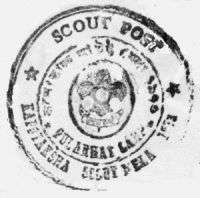

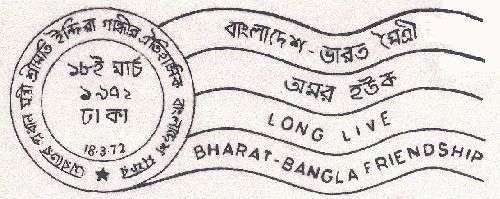
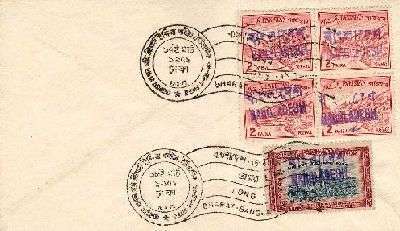
The cancelation has been applied twice to this cover that bears Pakistani stamps overprinted with “Bangladesh” in Bangla and English.
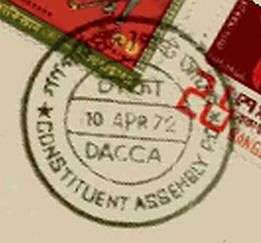
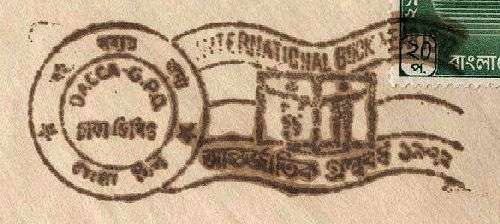

1973
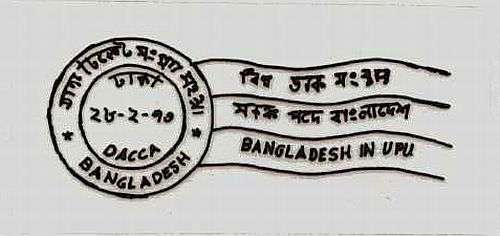
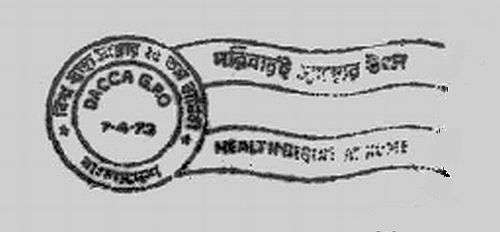
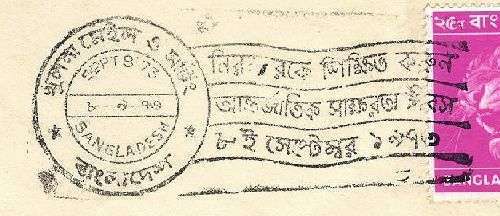
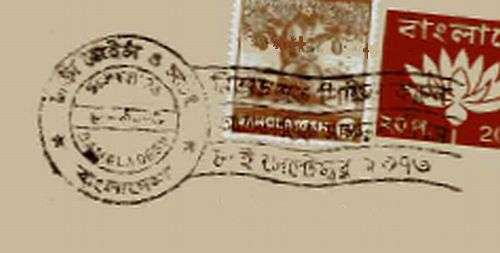


This is not the same cancellation used on the FDC for the Compernicus stamp. The top image is from Khulna and the bottom from Dacca.
1975
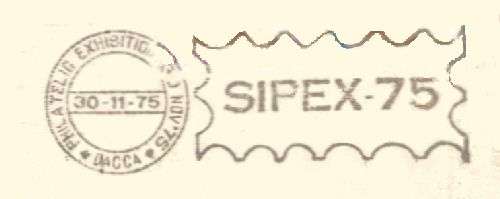
1976
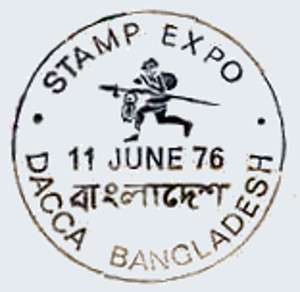
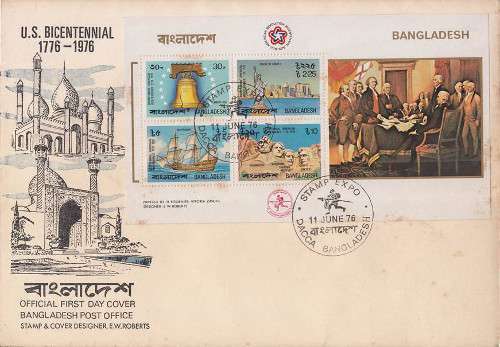
1976


1977
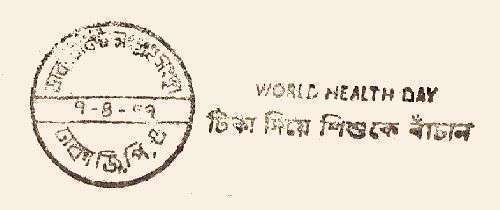
1978
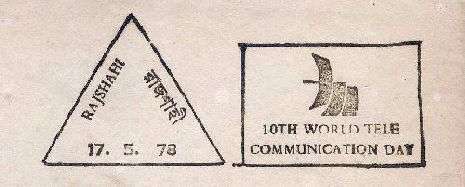
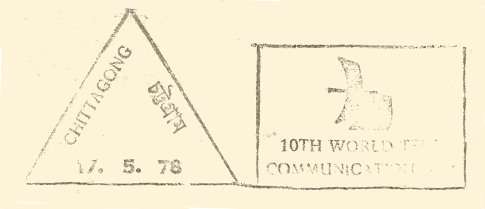
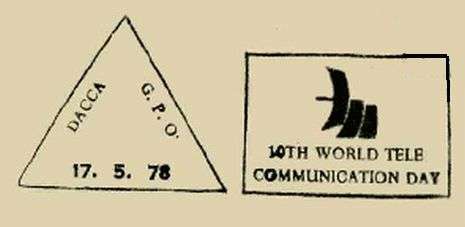
All of the cancellation are in English, but the Rajshahi and Chittagong cancelations have the name of the city in Bangla, as well as English.
1978
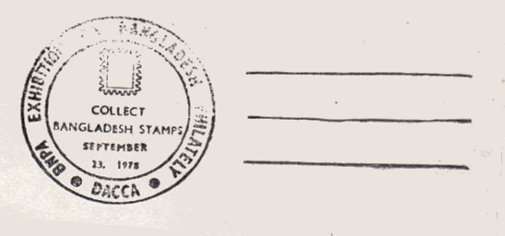
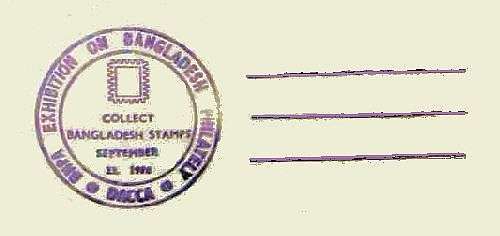
1979
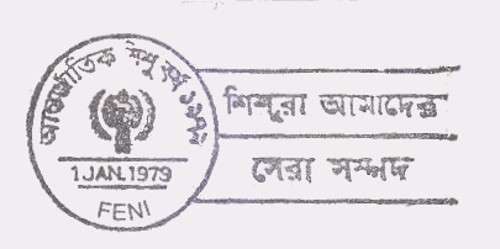
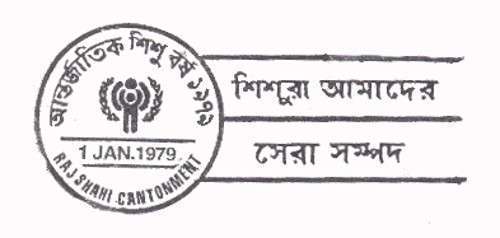
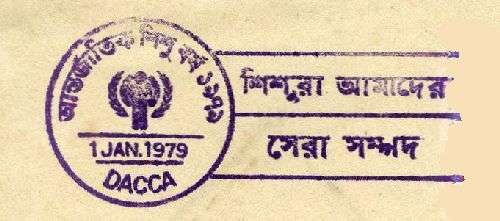
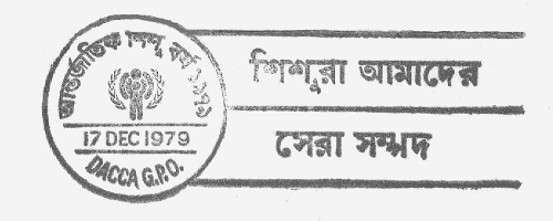
1 January – “International Year of the Child” in Bangla (Also see Special Postmarks with Privately Prepared Cachets).
1979



